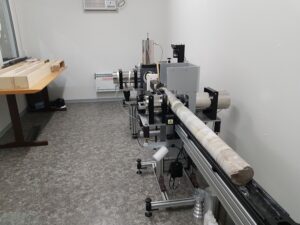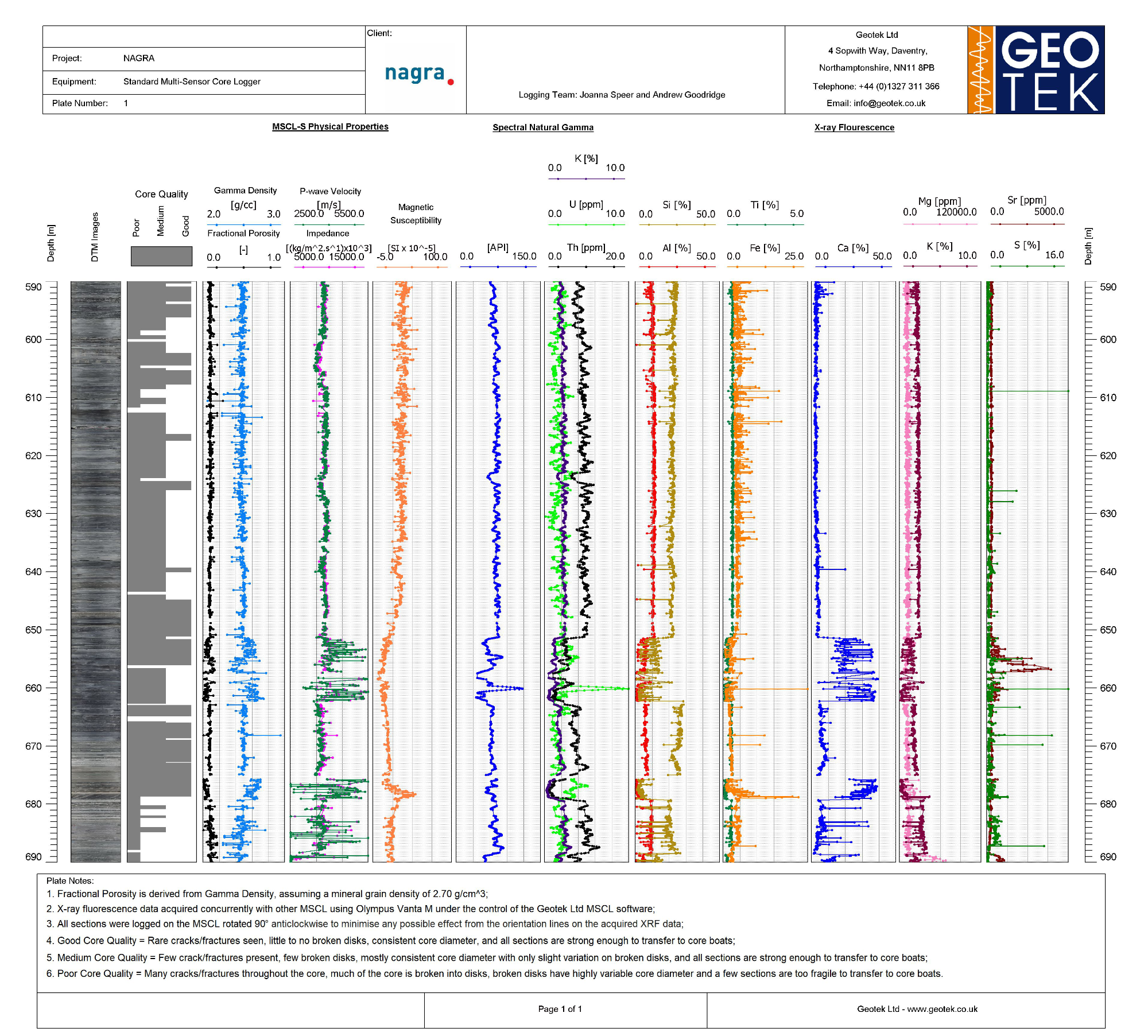02 Nov Geotek Perform Crucial Core Analysis for Switzerland’s New Nuclear Waste Repository
The National Cooperative for the Disposal of Radioactive Waste (NAGRA) appointed Geotek to perform core analysis in the context of the site selection process for radioactive waste disposals in Northern Switzerland. Geotek are key in providing additional data at a higher resolution compared to the standard wireline techniques, ultimately improving the resolution of the existing downhole geophysical data suite. The focus of Geotek’s work scope is to non-destructively investigate the physical and chemical rock properties of the Opalinus Clay and the adjacent clay-rich units.

Approximately 40% of Switzerland’s electricity comes from nuclear energy, which leaves a substantial amount of waste to be removed. Radioactive waste must be disposed of in a way that ensures the permanent protection of the population and the environment. The only compliant method that guarantees long-term safety is deep geological disposal. NAGRA is looking to construct two different types of nuclear waste repositories; a deep geological repository for spent fuel assemblies and vitrified fission product solutions from reprocessing (high-level waste); and a deep geological repository for low and intermediate-level waste. In order for NAGRA to build a geological model of the potential repository sites, they are acquiring several deep boreholes across three targeted sites over the next 3 years, of which Geotek are analysing predefined intervals of the host rock Opalinus Clay and its confining units (up to 300 m) from each using a Standard Multi-Sensor Core Logger (MSCL-S).

Previously Geotek has investigated how MSCL and X-ray techniques can be used to identify heterogeneity within clay formations for nuclear waste repositories, which successfully revealed small scale lithological variation, additional regional geological units, and stratigraphic tie points between the MSCL physical properties and pre-existing wireline dataset. The data we collected (see figure to the left) was crucial for the client to help determine their laboratory sub-sampling selection and testing, and aid in their geological and geotechnical evaluation of the proposed host lithology. Building on our experience in the analysis of core samples, our geoscientist team are well-equipped to provide the vital information that will assist NAGRA’s assessment of the potential deep repository location.
It is hugely important that the correct host rock is selected for the construction of the waste repository, as it must prevent entry to the environment for up to 1 Mio years. The deep repository is therefore proposed to be constructed in the low permeability rock of the Opalinus Clay. Throughout the duration of this project, the MSCL-S will be using attenuated gamma density, ultra-sonic P-wave velocity, X-ray fluorescence, magnetic susceptibility and spectral natural gamma to characterise the stratigraphy within the boreholes presented, and in particular the composition of the Opalinus Clay and the adjacent units.

Geotek to date have logged approximately 400m of whole rock core during this project, which consisted of a sequence of carbonate and clay lithologies, reaching depths of up to 1050.00 m. Geotek’s MSCL-S was able to clearly identify sub-units within the Opalinus Clay. A logging interval of 5 cm was used for the MSCL, meaning that we were able to provide 3 times as many data points as the existing wireline data. For density, P-wave velocity and natural gamma, this helped the identification of interesting sub-units. However, the clearest sub-unitisation was observed within the geochemical dataset collected by the Olympus Vanta XRF. Variations identified within the Si, Ca, Fe, K and Sr concentrations help determine the lithology type and clearly indicate a higher level of detail within the cored stratigraphy. The MSCL physical properties and geochemical data allow for detailed comparisons between the borehole locations and ultimately the stratigraphy of each target area to further assist NAGRA in their choice of location for the deep geological repository.

The initial success of this project has led NAGRA to purchase their own MSCL-S that Geotek will be operating and providing training on for NAGRA throughout the course of the project. Over the next three years, Geotek’s Geoscientists will continue to assess the core samples across the three target areas. If you would like to find out more about NAGRA’s project, follow this link. To learn more about the capabilities of the MSCL-S, or a previous study we carried out for a radioactive waste management company, click the links.


